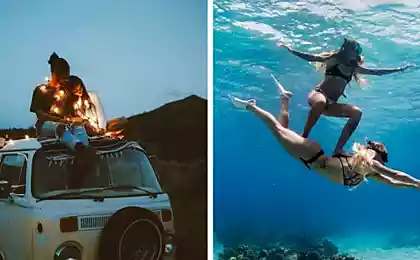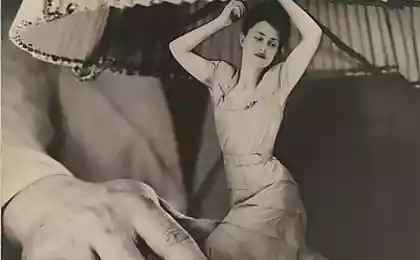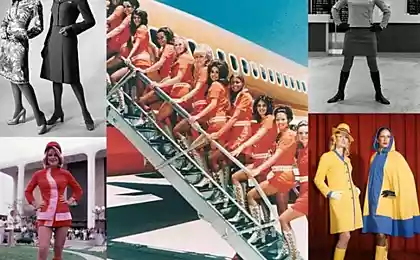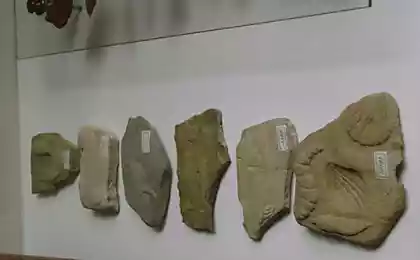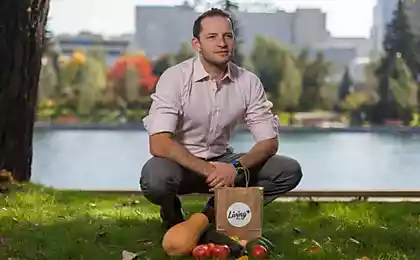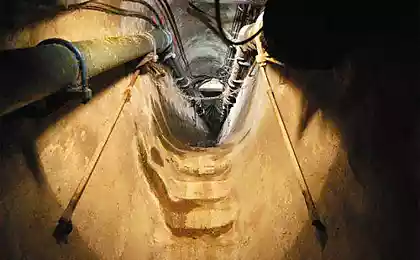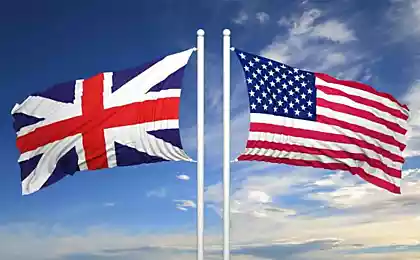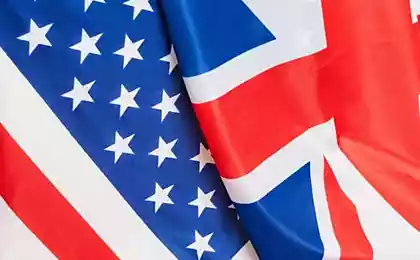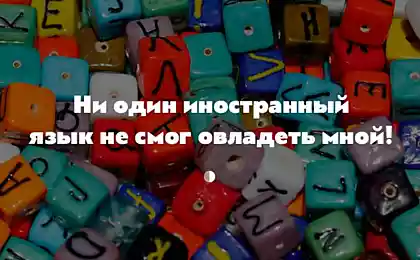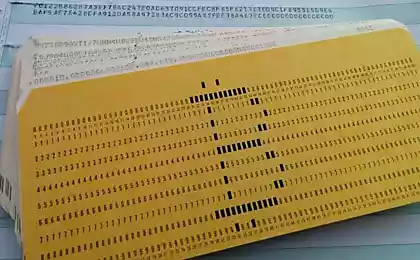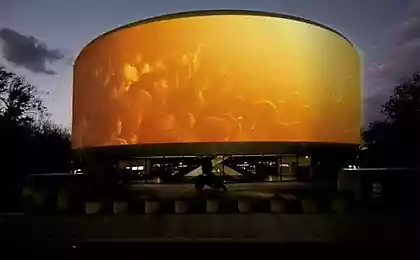908
Living Computer Museum
I finally got to the Living Computer Museum, and made a few photos.
50 pictures + description via habrahabr
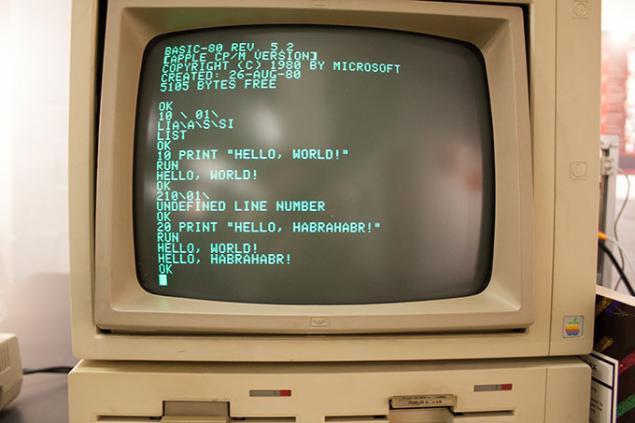
The museum is located here in this nondescript gray building with no windows is not the most popular in the Seattle area.
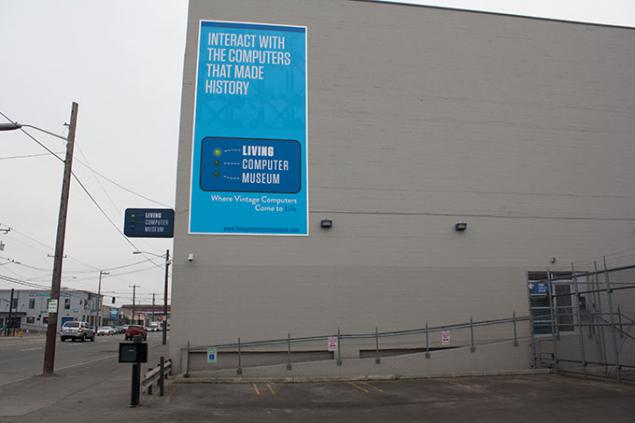
The museum consists of two halls. In the first exhibited minicomputers (mainly the production of DEC), personal computers of the 80s and has a corner of Microsoft. The xx: 15 every hour starts a half-hour tour of the museum.
Minicomputers so called because they can stay in one room and there still have room for operators. This, for example, DEC PDP-7, by the way, is the only computer that can not be touched visitors: it launched some experiments with a radioactive sample.
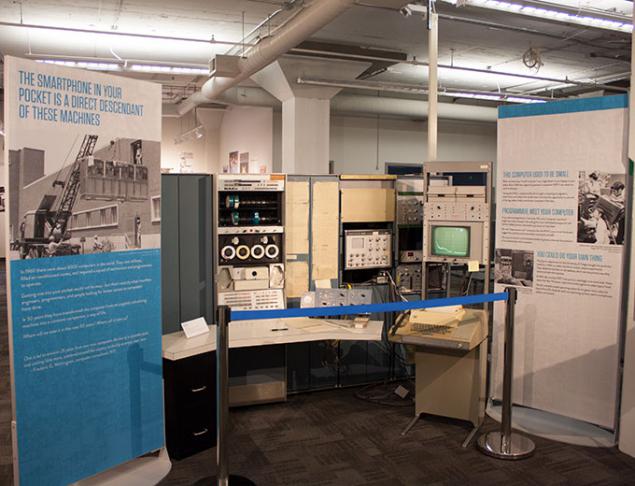
He appeared in 1964, used a 18-bit machine word and memory on ferrite cores in volume from 4K to 32K words (data labels, Wikipedia states that expanded memory up to 64K words), 285 KIPS. This instance is used in the University of Oregon in the nuclear physics laboratory and maintained in a serviceable condition before being sent to the museum.
And here is the radioactive sample:

DEC PDP-8. The first computer that it was possible to take home. The process of transportation home can be seen in the photo on the left. There was performed for placement in the rack and in the desktop.
Presented in 1970, the 12-bit words, the amount of memory on 4K to 32K words 385 KIPS.
Actually the computer is located in the right front, a section with orange and yellow switches at the teletype - this is it. Everything else - the periphery.
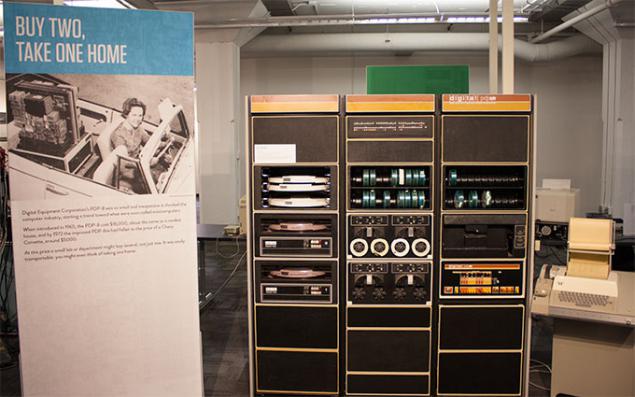
Next is the Data General Nova.
It was developed by engineer Edson de Castro, who retired from the DEC after his computer project was rejected in favor of the PDP-11. The computer uses a 16-bit word, and has a memory of 4K to 32K words 160 KIPS. This computer supported IBM started the fashion for the size of the word equal power of two multiple of 8. Presented in 1969.
Stool, standing near the computer offers visitors to play with buttons and dials. I, unfortunately, came shortly before the closing of the museum and find out how it works has not had time.
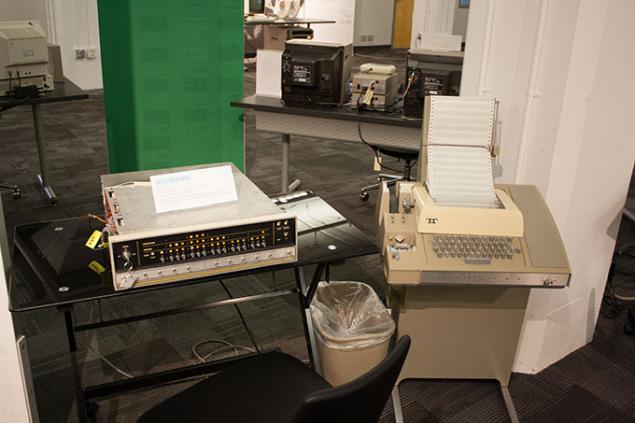
But someone before me was enough time:
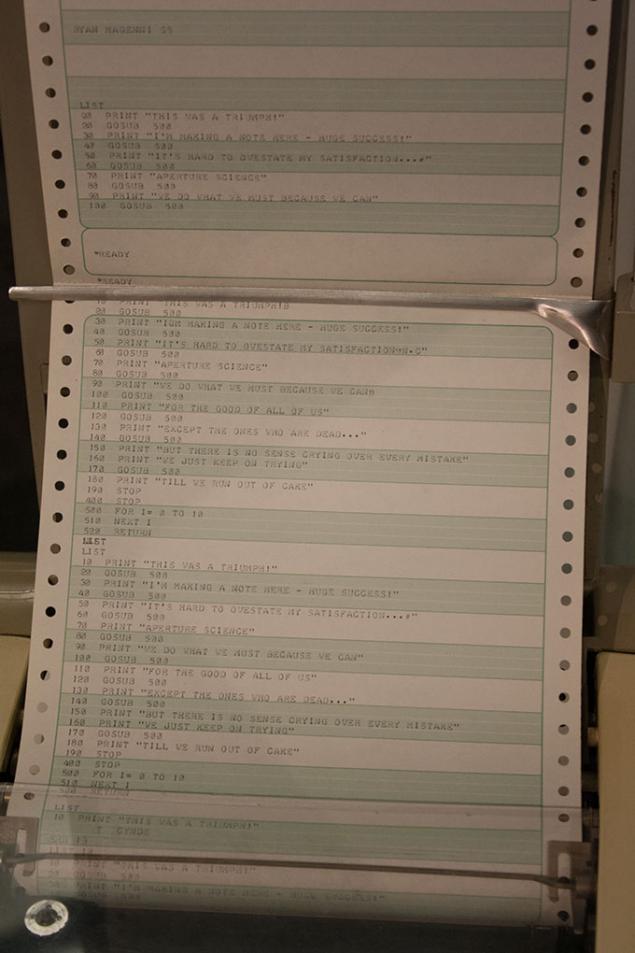
DEC PDP-11/70:
The computer appeared in the moment of transition to solid-state technology. Originally supplied with memory on ferrite cores, but later appeared version with semiconductor memory capacity of 2M words, which is all placed inside the unit to the processor, and did not require placement in the rack. 16-bit words, 2.5 MIPS. Note also the terminal VT100, on the left.
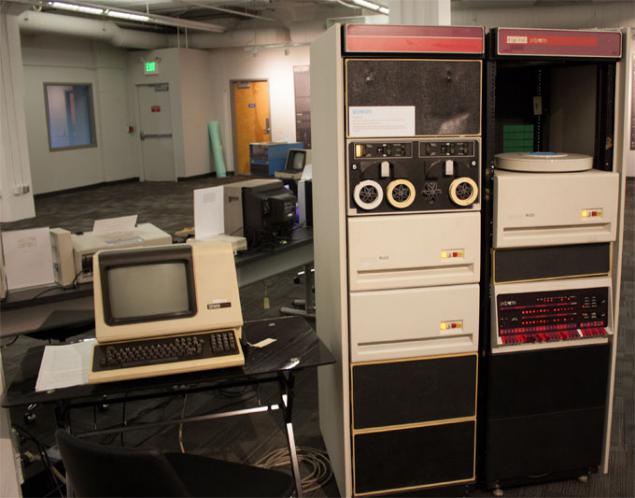
Console IBM System / 360 model 91:
Computers themselves did not survive because of the lavish use of gold in the design. Museum staff are working on a hardware emulator, which at the time of my visit was off.
32-bit word, from 2 to 6 megabytes of RAM (count of bytes rather than words went from IBM), 16.7 MIPS, presented in 1967. He programmed using punch cards, standing next to a functioning machine for packing them, but I managed not to take his picture.
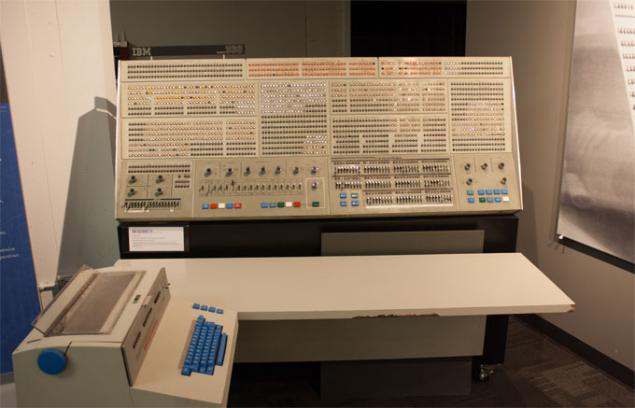
DEC PDP-12:
Mutant, combines the functionality of PDP-8 and LINC, switched mode a special pen on the keyboard. Allows you to connect a large number of laboratory equipment. Possesses a vector display for displaying information.
12-bit word, from 4K to 32K words of memory, 300 KIPS, presented in 1969.
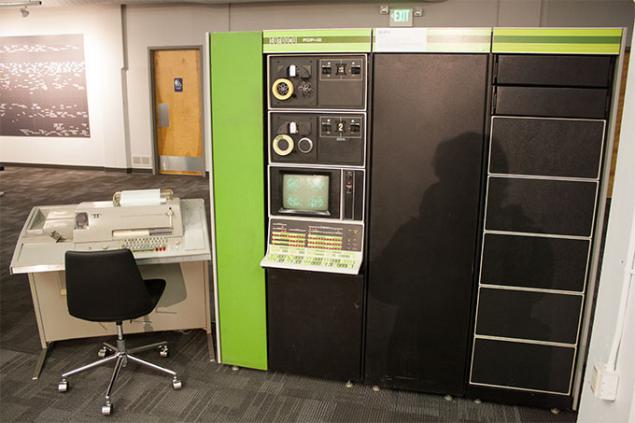
Interdean 7/32:
The computer has proven the usefulness of writing operating systems are not in assembly language, and in general programs of the separation of iron on which they are executed. This is not the first computer in a series of PDP, which has been ported to Unix. Presented in 1974, the 32-bit words, the memory of 8K to 256K words, 280 KIPS.
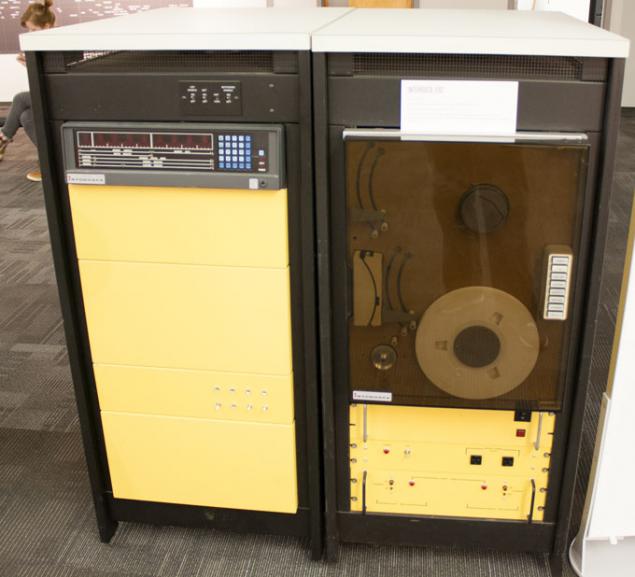
A poster with the story:
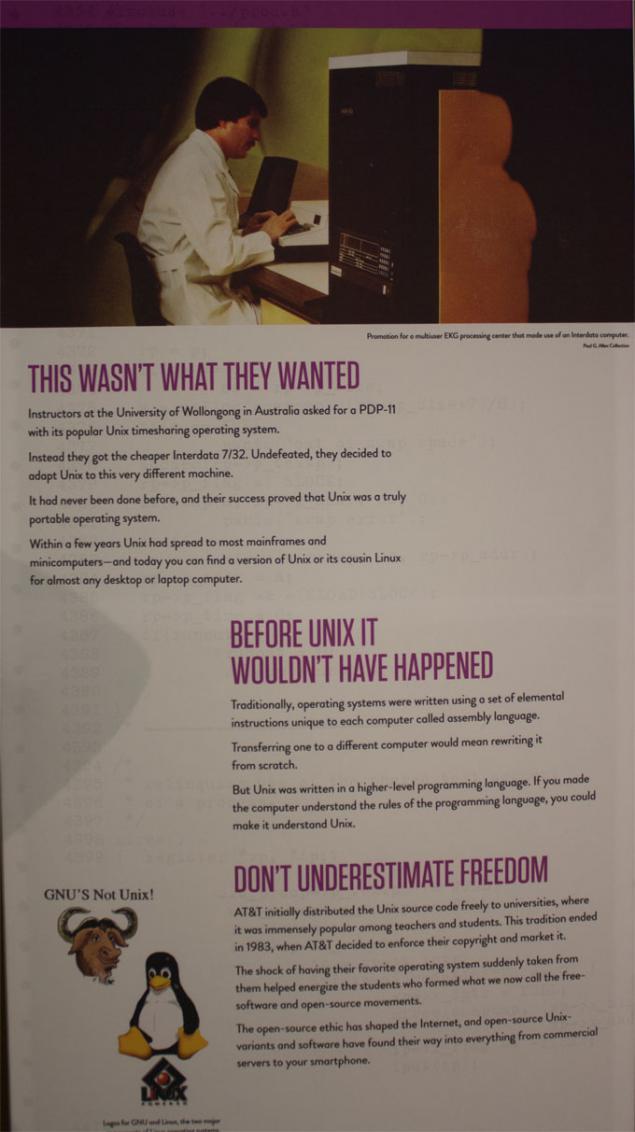
We are moving to the mainframe room. There's "a little" noisy:
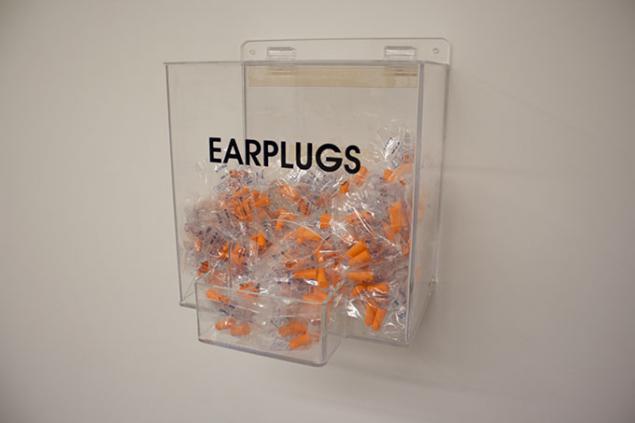
Xerox Sigma 9:
Xerox did good computers, but failed to marketing, the result has been squeezed out of the market mainframe.
32-bit words from 64K to 512K words of memory, 600 KIPS.
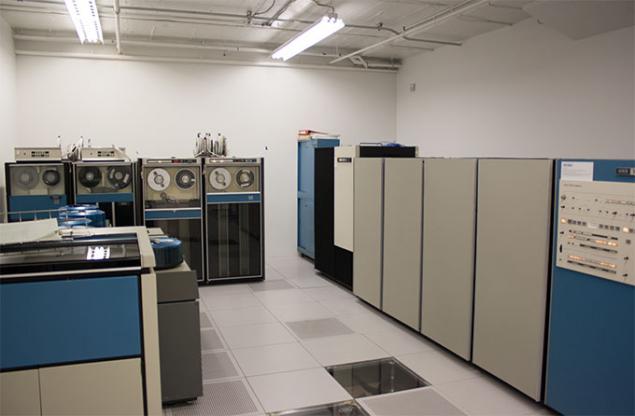
Disk array. All off because it turned out that when dust gets into the running device, balancing disk could be broken wheels and naturally explode.
Blue cylinders - containers for storage of hard drives, one drive weighs kilograms 5.
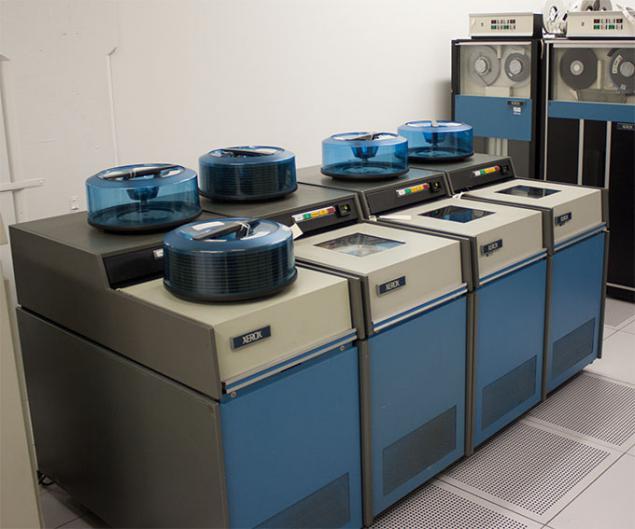
DEC PDP-10: KI-10:
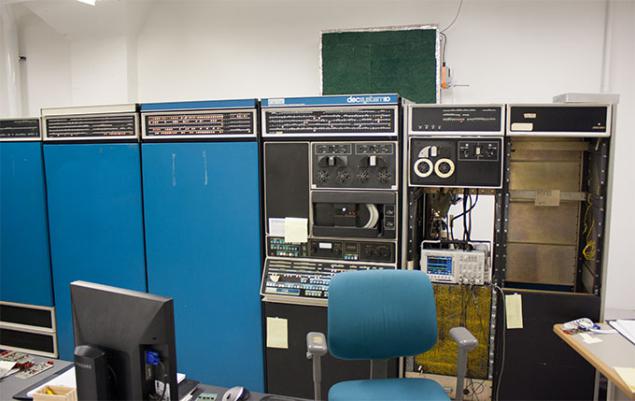
This computer is in the recovery process. He was kept in the flooded basement, which is not impacted positively on its performance.
Machine Information and instructions for launching:

Polurazobrannom IBM System / 360.

Eight-inch floppy, long time since I did not see them.

DEC PDP-10: KS-10:
36-bit words, the memory of 256K to 512K words, 300 KIPS. This computer was bought by Microsoft after moving from Albuquerque.
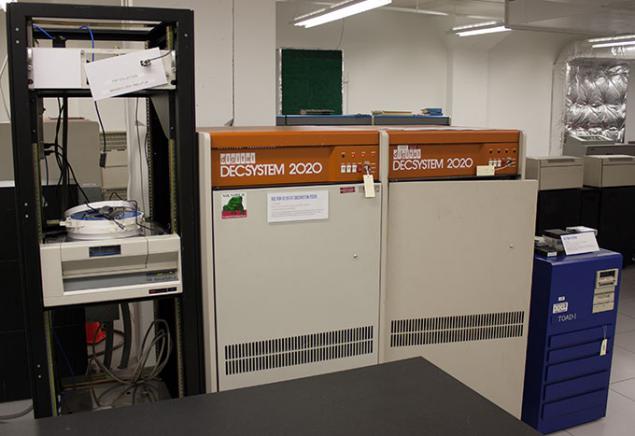
XKL TOAD-1:
The developer of the computer wanted to make a clone of KL-10, which could be accommodated on the table. The development took 15 years, and by the time-to-market (1995), referring to the dominance of IBM PC-compatible computers, he was no use to anyone. And on the table was placed with difficulty.
36-bit word, from 32M to 128M memory words, 2.5 MIPS.
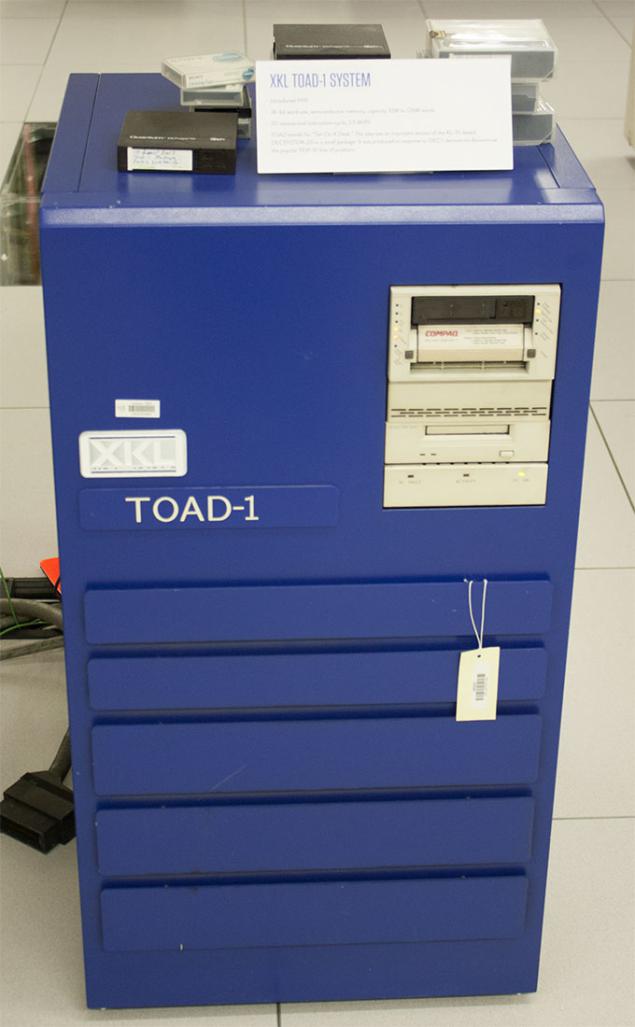
DEC VAX-11 / 780-5:
Presented in 1982. 32-bit word, from 1 to 64 megabytes of memory, 750 KIPS.
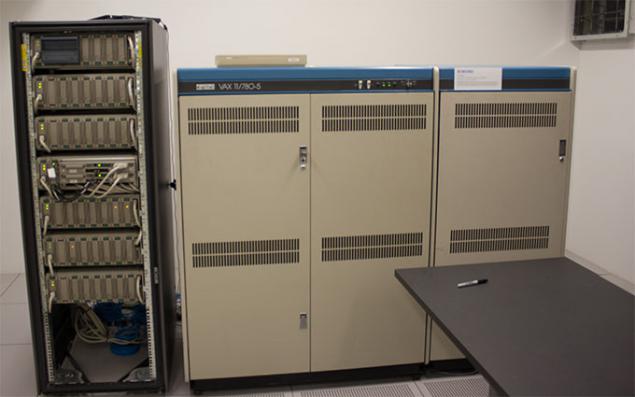
Data General Eclipse / MV 8000:
Presented in 1980, the 32-bit word, from 256 kilobytes to 2 megabytes of memory, 250 KIPS.
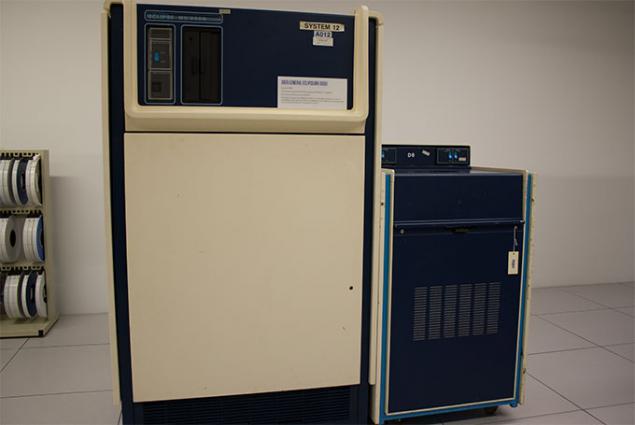
We go back to the smaller computers. Great-grandfather of all modern desktops Xerox Alto:
The first computer with a GUI, WYSIWIG editor, Ethernet and mouse. It is because Microsoft and Apple has borrowed many features for their computers and operating systems.
16-bit word, from 64 to 256 kilobytes of memory.
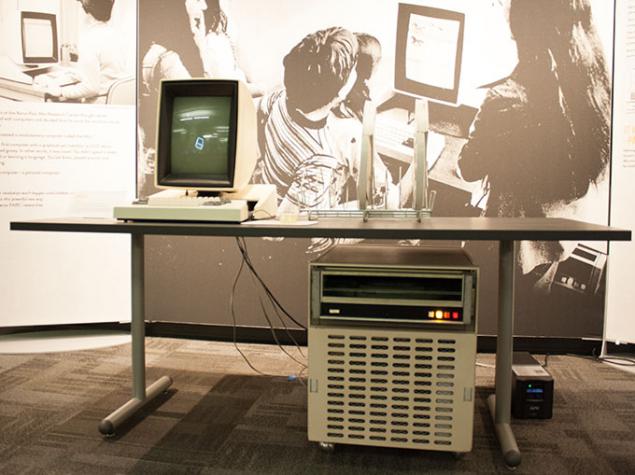

AT & T BLIT:
Terminal c own memory and processor that receive executable code over the network and executed locally, in a certain way you untying of network bandwidth. On the monitor, see the prototype of X Window System.
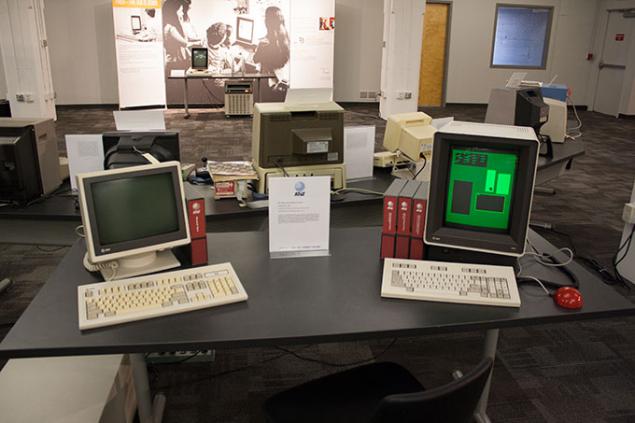
Without a mouse could have:
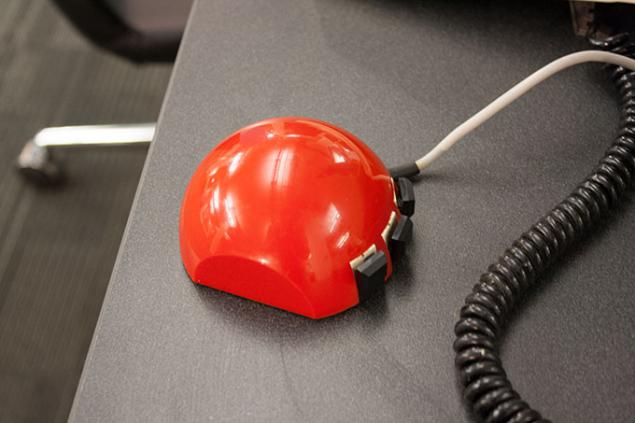
Start programming manual'a:
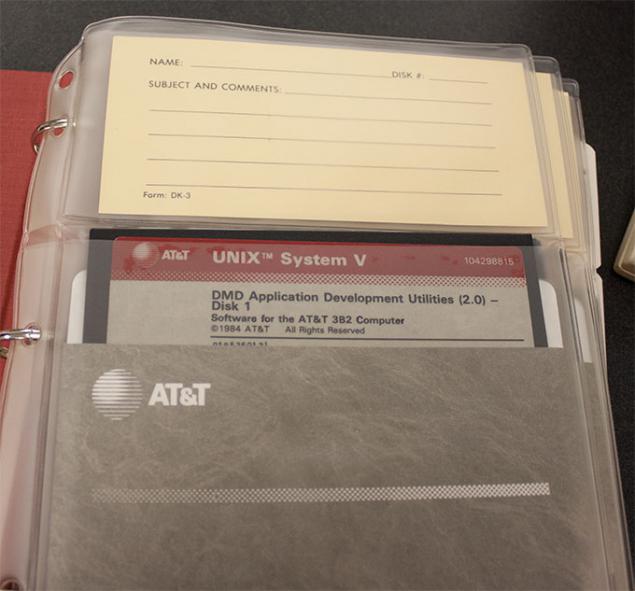
Mid. How to work with a mouse:
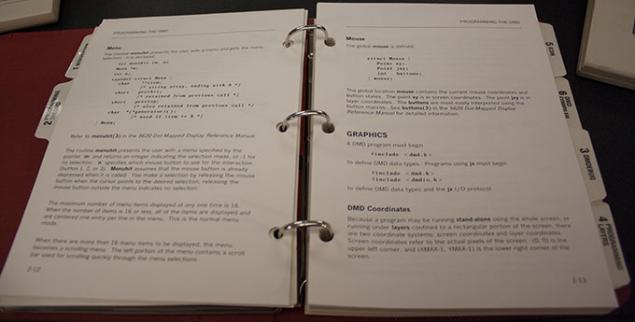
Legendary MITS Altair 8800:
A computer that actually became a parent Microsoft. It was for him, Bill Gates and Paul Allen wrote in the shortest possible time and with no access to the computer itself (to them was Intel 8080 emulator on the PDP-10, which are adapted according to the instructions on the Altair) the same interpertator BASIC that started Microsoft.

For $ 400 you will receive a bag of parts. If you have a direct hand soldering and you could get a working computer, which is programmed toggle switches on the front panel. On entering the program, down 2 and 2, it will take a few minutes and then you can see the answer in binary form on the ruler of LEDs: "100", widely known among the population as a "4". Despite all the difficulties people bought Altair simply because, at last, able to have your own computer.
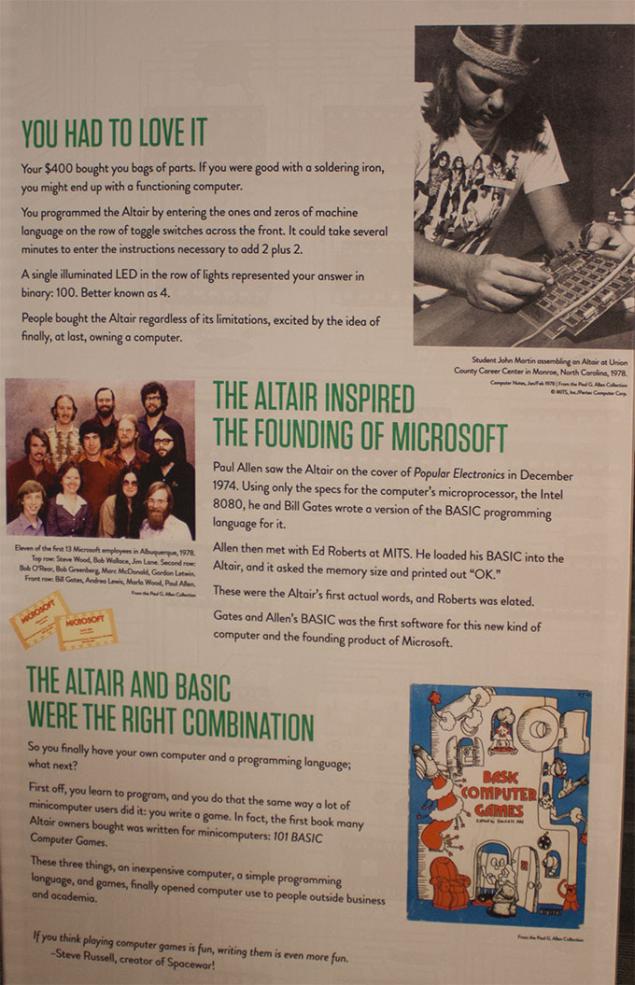
Clone Altair IMSAI 8080:
Intel 8080, from 256 bytes to 64 kilobytes of memory.
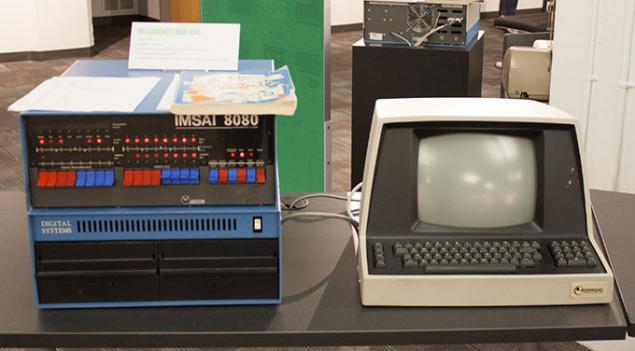
Radio Shack TRS-80:
Unfortunately, there was in okolokomatoznom state from which I could not withdraw it.
Zilog Z-80, from 4 to 48 kilobytes of memory.
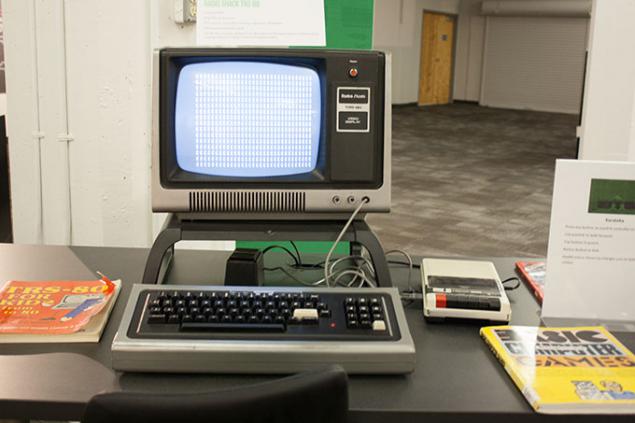
Apple IIc:

Apple II plus
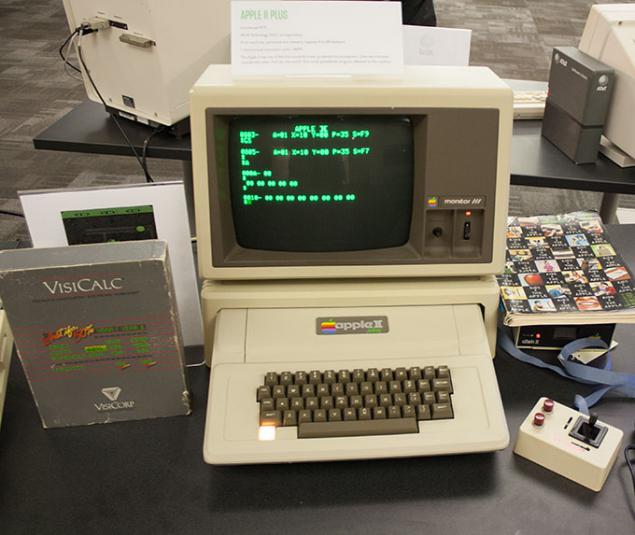
Atari 400 game «Ms. Pacman »:
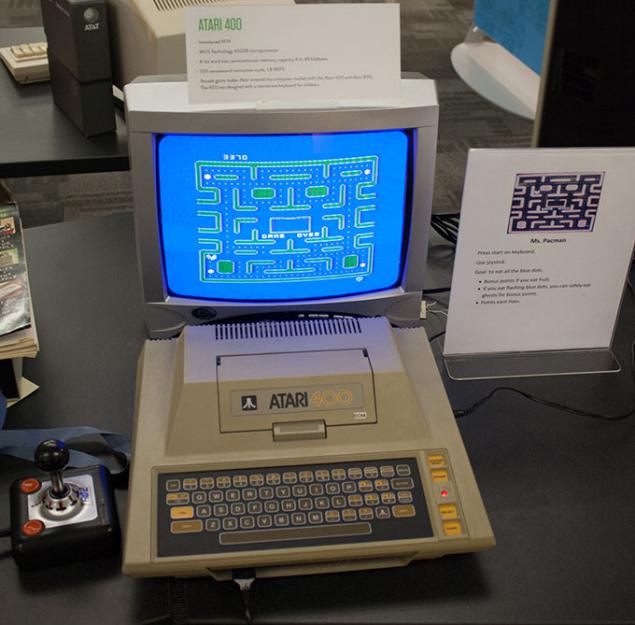
Atari 800 and «Galaxian»:

One of the first portable computer Osborne Executive:
Inside Zilog Z80B, 64 KB of memory, 1982.
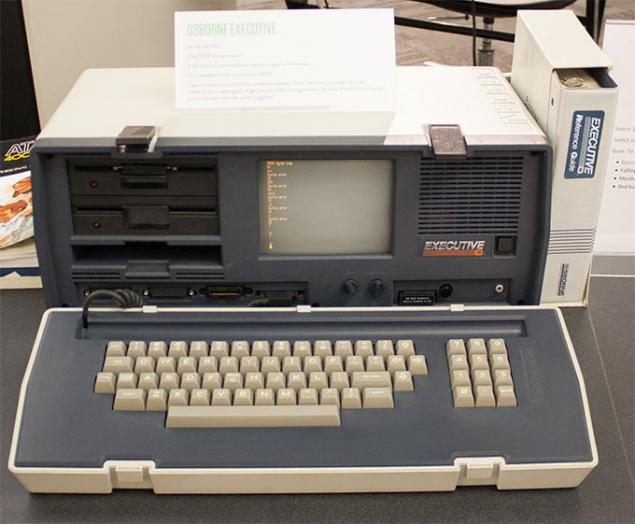
Commodore 128:
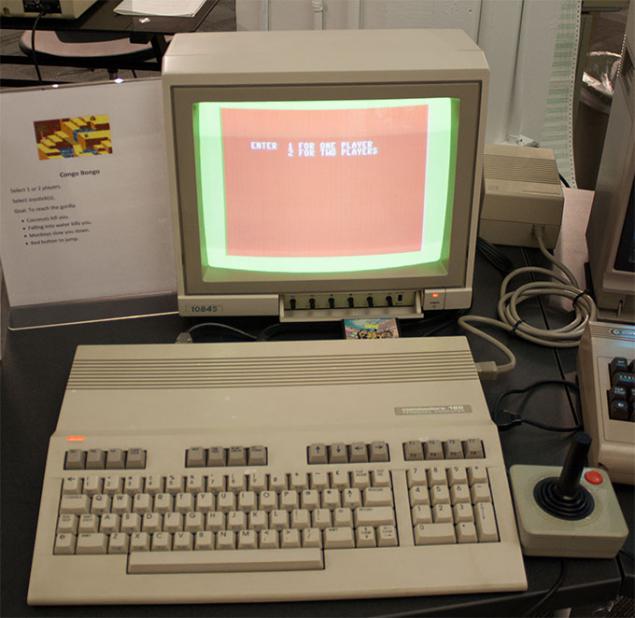
The Commodore 64:

Commodore VIC-20:
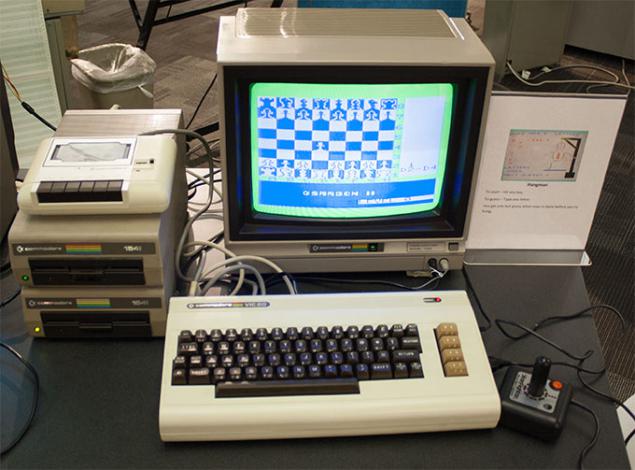
Judging by the inscriptions on the body, it is IBM PCjr.

This betrays a sign posted next to the drive and the characteristic without the eject button.

Moving into a corner Microsoft.
Microsoft SoftCard allowed to run the operating system CP / M computers Apple II.
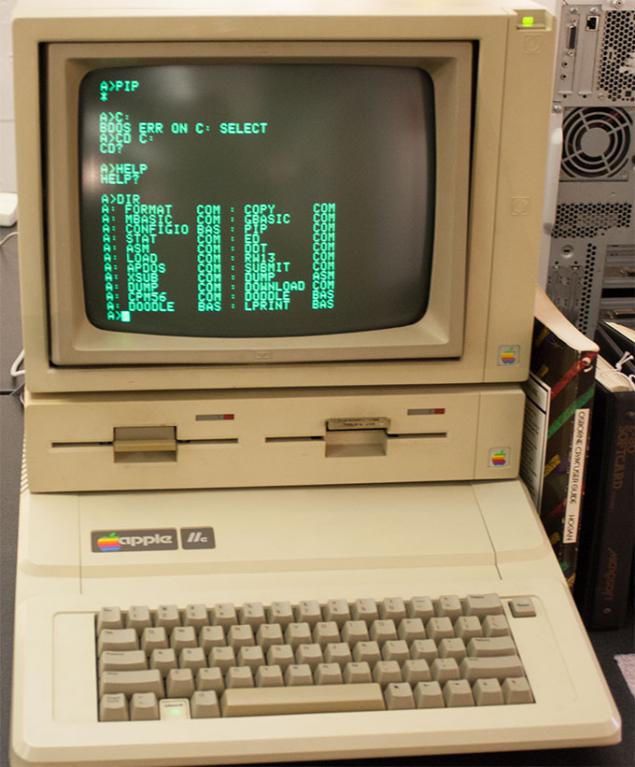
Apple Lisa running Microsoft Xenix:

Windows 1.0, or, as it was called then, Windows:
Pay attention to a tile window manager. In subsequent versions of it abandoned.

A little bit of advertising 80.
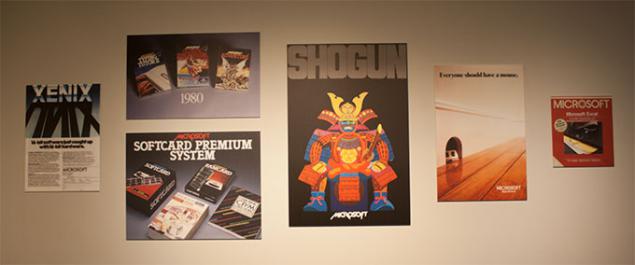
Microsoft Bob:

Source:
50 pictures + description via habrahabr

The museum is located here in this nondescript gray building with no windows is not the most popular in the Seattle area.

The museum consists of two halls. In the first exhibited minicomputers (mainly the production of DEC), personal computers of the 80s and has a corner of Microsoft. The xx: 15 every hour starts a half-hour tour of the museum.
Minicomputers so called because they can stay in one room and there still have room for operators. This, for example, DEC PDP-7, by the way, is the only computer that can not be touched visitors: it launched some experiments with a radioactive sample.

He appeared in 1964, used a 18-bit machine word and memory on ferrite cores in volume from 4K to 32K words (data labels, Wikipedia states that expanded memory up to 64K words), 285 KIPS. This instance is used in the University of Oregon in the nuclear physics laboratory and maintained in a serviceable condition before being sent to the museum.
And here is the radioactive sample:

DEC PDP-8. The first computer that it was possible to take home. The process of transportation home can be seen in the photo on the left. There was performed for placement in the rack and in the desktop.
Presented in 1970, the 12-bit words, the amount of memory on 4K to 32K words 385 KIPS.
Actually the computer is located in the right front, a section with orange and yellow switches at the teletype - this is it. Everything else - the periphery.

Next is the Data General Nova.
It was developed by engineer Edson de Castro, who retired from the DEC after his computer project was rejected in favor of the PDP-11. The computer uses a 16-bit word, and has a memory of 4K to 32K words 160 KIPS. This computer supported IBM started the fashion for the size of the word equal power of two multiple of 8. Presented in 1969.
Stool, standing near the computer offers visitors to play with buttons and dials. I, unfortunately, came shortly before the closing of the museum and find out how it works has not had time.

But someone before me was enough time:

DEC PDP-11/70:
The computer appeared in the moment of transition to solid-state technology. Originally supplied with memory on ferrite cores, but later appeared version with semiconductor memory capacity of 2M words, which is all placed inside the unit to the processor, and did not require placement in the rack. 16-bit words, 2.5 MIPS. Note also the terminal VT100, on the left.

Console IBM System / 360 model 91:
Computers themselves did not survive because of the lavish use of gold in the design. Museum staff are working on a hardware emulator, which at the time of my visit was off.
32-bit word, from 2 to 6 megabytes of RAM (count of bytes rather than words went from IBM), 16.7 MIPS, presented in 1967. He programmed using punch cards, standing next to a functioning machine for packing them, but I managed not to take his picture.

DEC PDP-12:
Mutant, combines the functionality of PDP-8 and LINC, switched mode a special pen on the keyboard. Allows you to connect a large number of laboratory equipment. Possesses a vector display for displaying information.
12-bit word, from 4K to 32K words of memory, 300 KIPS, presented in 1969.

Interdean 7/32:
The computer has proven the usefulness of writing operating systems are not in assembly language, and in general programs of the separation of iron on which they are executed. This is not the first computer in a series of PDP, which has been ported to Unix. Presented in 1974, the 32-bit words, the memory of 8K to 256K words, 280 KIPS.

A poster with the story:

We are moving to the mainframe room. There's "a little" noisy:

Xerox Sigma 9:
Xerox did good computers, but failed to marketing, the result has been squeezed out of the market mainframe.
32-bit words from 64K to 512K words of memory, 600 KIPS.

Disk array. All off because it turned out that when dust gets into the running device, balancing disk could be broken wheels and naturally explode.
Blue cylinders - containers for storage of hard drives, one drive weighs kilograms 5.

DEC PDP-10: KI-10:

This computer is in the recovery process. He was kept in the flooded basement, which is not impacted positively on its performance.
Machine Information and instructions for launching:

Polurazobrannom IBM System / 360.

Eight-inch floppy, long time since I did not see them.

DEC PDP-10: KS-10:
36-bit words, the memory of 256K to 512K words, 300 KIPS. This computer was bought by Microsoft after moving from Albuquerque.

XKL TOAD-1:
The developer of the computer wanted to make a clone of KL-10, which could be accommodated on the table. The development took 15 years, and by the time-to-market (1995), referring to the dominance of IBM PC-compatible computers, he was no use to anyone. And on the table was placed with difficulty.
36-bit word, from 32M to 128M memory words, 2.5 MIPS.

DEC VAX-11 / 780-5:
Presented in 1982. 32-bit word, from 1 to 64 megabytes of memory, 750 KIPS.

Data General Eclipse / MV 8000:
Presented in 1980, the 32-bit word, from 256 kilobytes to 2 megabytes of memory, 250 KIPS.

We go back to the smaller computers. Great-grandfather of all modern desktops Xerox Alto:
The first computer with a GUI, WYSIWIG editor, Ethernet and mouse. It is because Microsoft and Apple has borrowed many features for their computers and operating systems.
16-bit word, from 64 to 256 kilobytes of memory.


AT & T BLIT:
Terminal c own memory and processor that receive executable code over the network and executed locally, in a certain way you untying of network bandwidth. On the monitor, see the prototype of X Window System.

Without a mouse could have:

Start programming manual'a:

Mid. How to work with a mouse:

Legendary MITS Altair 8800:
A computer that actually became a parent Microsoft. It was for him, Bill Gates and Paul Allen wrote in the shortest possible time and with no access to the computer itself (to them was Intel 8080 emulator on the PDP-10, which are adapted according to the instructions on the Altair) the same interpertator BASIC that started Microsoft.

For $ 400 you will receive a bag of parts. If you have a direct hand soldering and you could get a working computer, which is programmed toggle switches on the front panel. On entering the program, down 2 and 2, it will take a few minutes and then you can see the answer in binary form on the ruler of LEDs: "100", widely known among the population as a "4". Despite all the difficulties people bought Altair simply because, at last, able to have your own computer.

Clone Altair IMSAI 8080:
Intel 8080, from 256 bytes to 64 kilobytes of memory.

Radio Shack TRS-80:
Unfortunately, there was in okolokomatoznom state from which I could not withdraw it.
Zilog Z-80, from 4 to 48 kilobytes of memory.

Apple IIc:

Apple II plus

Atari 400 game «Ms. Pacman »:

Atari 800 and «Galaxian»:

One of the first portable computer Osborne Executive:
Inside Zilog Z80B, 64 KB of memory, 1982.

Commodore 128:

The Commodore 64:

Commodore VIC-20:

Judging by the inscriptions on the body, it is IBM PCjr.

This betrays a sign posted next to the drive and the characteristic without the eject button.

Moving into a corner Microsoft.
Microsoft SoftCard allowed to run the operating system CP / M computers Apple II.

Apple Lisa running Microsoft Xenix:

Windows 1.0, or, as it was called then, Windows:
Pay attention to a tile window manager. In subsequent versions of it abandoned.

A little bit of advertising 80.

Microsoft Bob:

Source:
